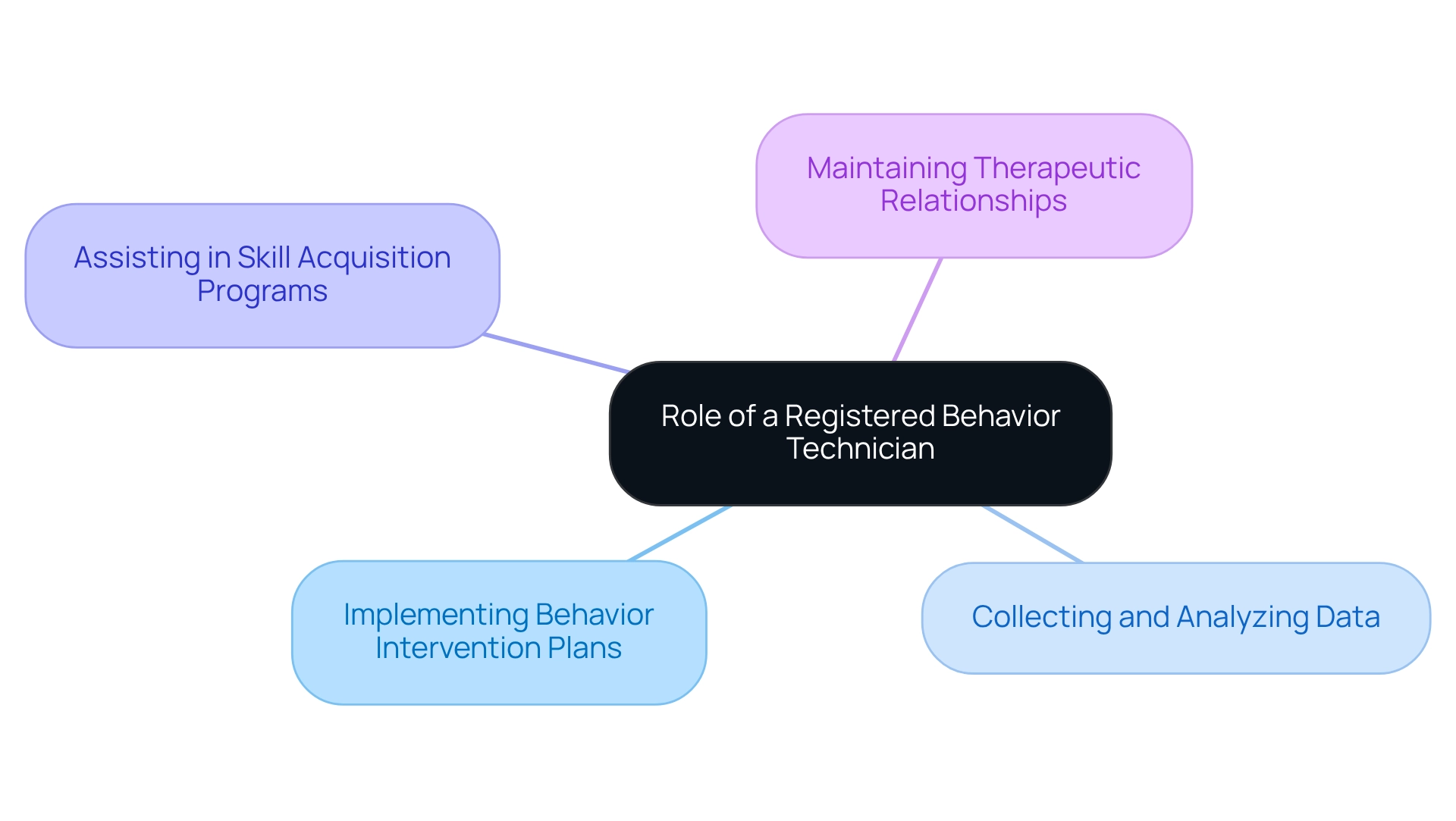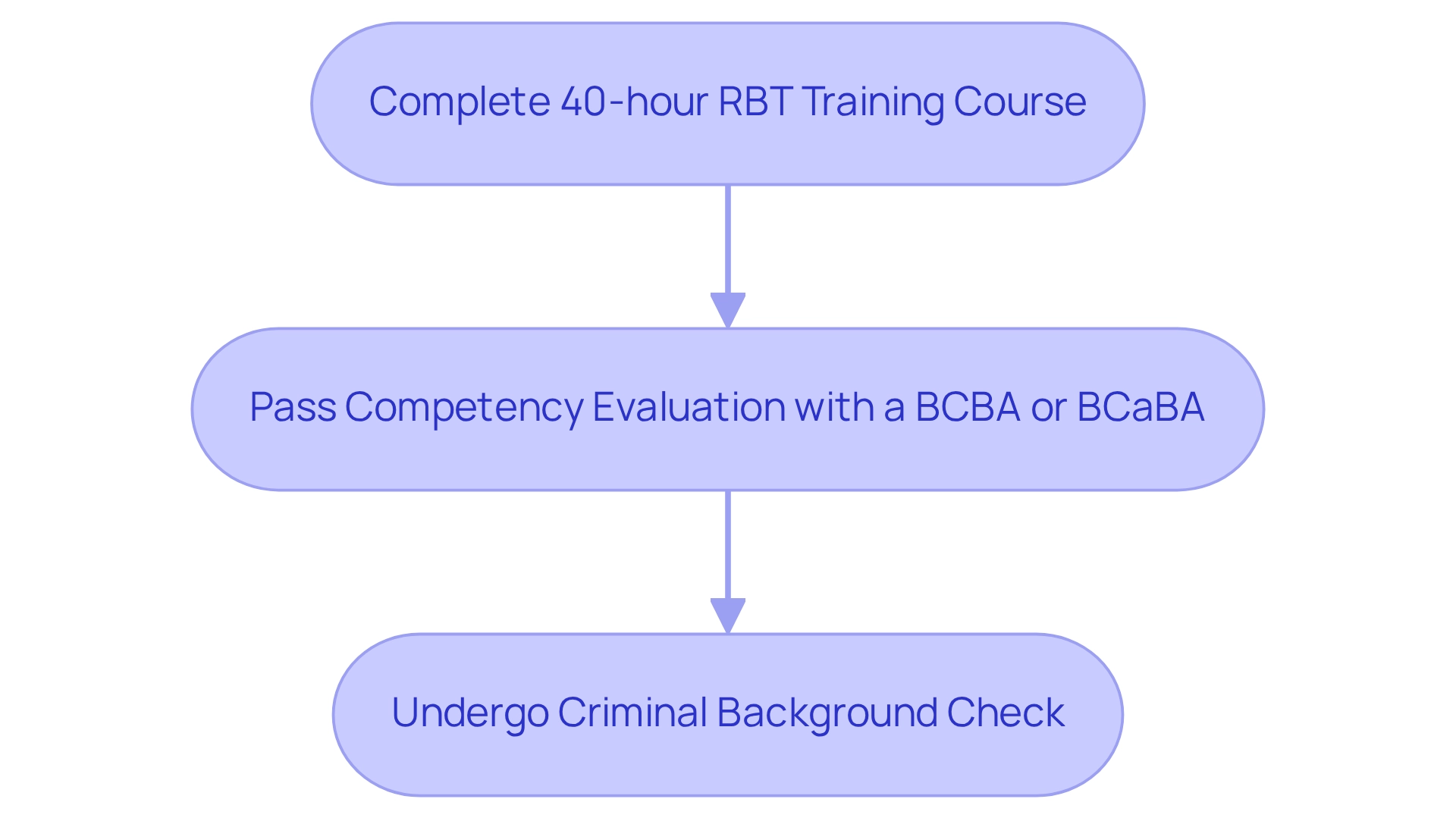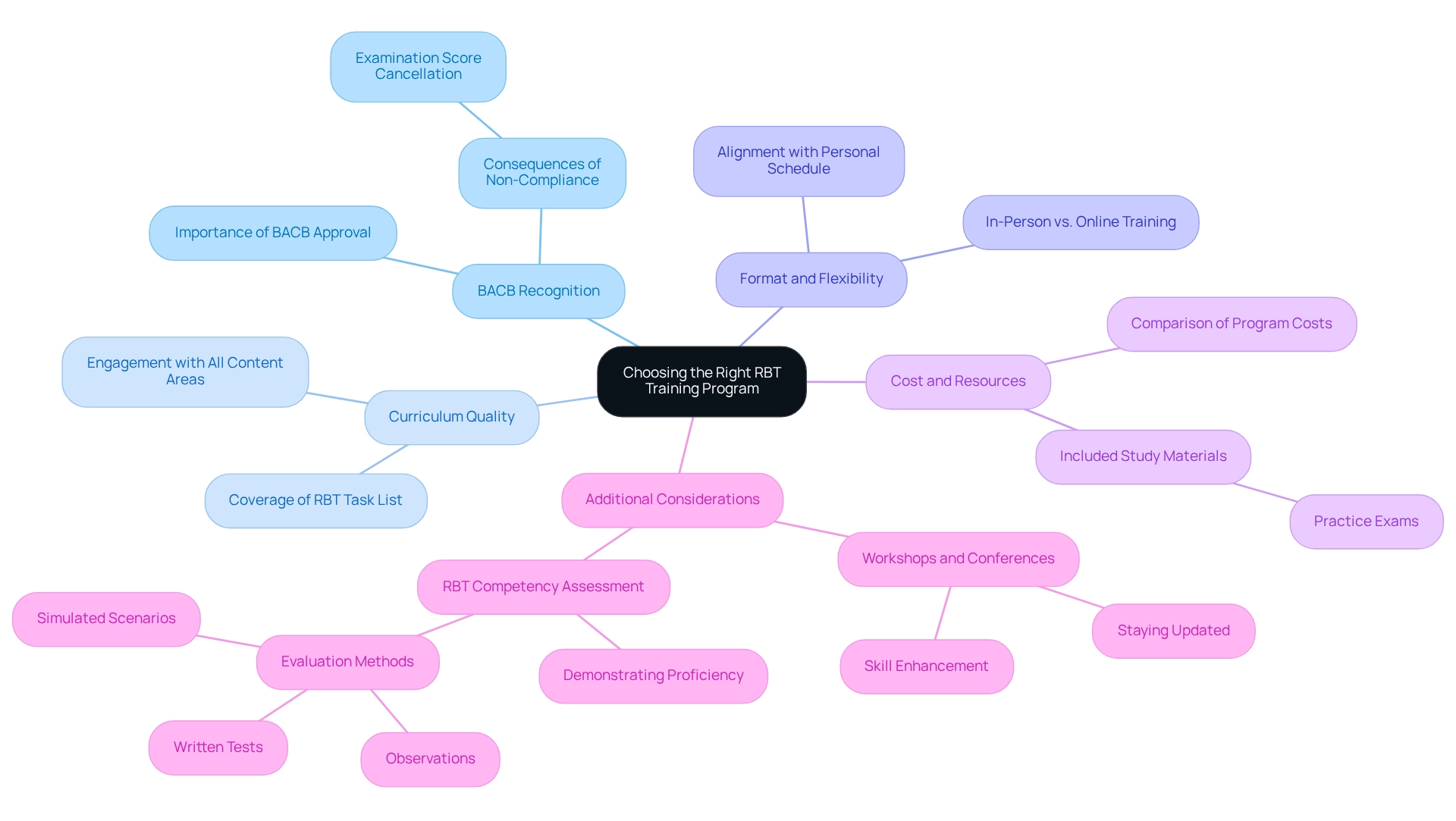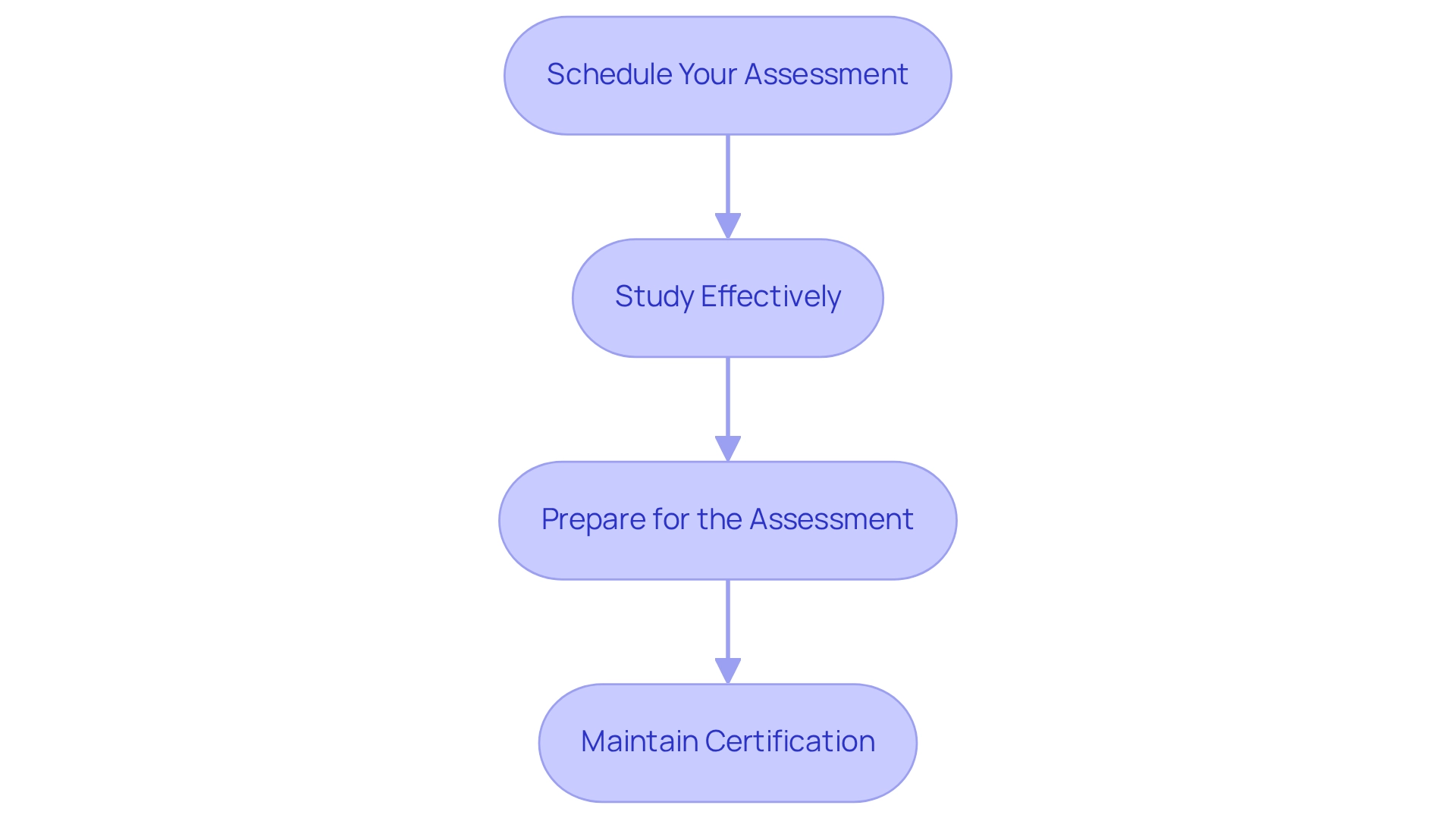June 1, 2025

The four essential steps for achieving success in Registered Behavior Technician (RBT) training are:
Mastering these steps is crucial for effective preparation and certification. This structured approach not only meets the necessary requirements but also enhances the skills vital for a thriving career in behavior analysis.
The journey to becoming a Registered Behavior Technician (RBT) is both rewarding and challenging, presenting a unique opportunity to make a significant impact in the lives of individuals, particularly children with autism. As the demand for skilled professionals in behavior analysis continues to surge, grasping the essential steps to certification becomes crucial.
Aspiring technicians must understand the fundamental responsibilities of an RBT and navigate the training and examination process effectively. This article serves as a comprehensive guide, outlining the key components of RBT certification, including:
With this knowledge, candidates will be well-equipped to embark on this fulfilling career path.
(RBT) serves as a crucial paraprofessional, executing behavior-analytic services under the guidance of a Board Certified Behavior Analyst (BCBA). RBTs engage directly with clients, frequently children with autism, to foster essential skills such as communication, socialization, and daily living. Their key responsibilities encompass:
Grasping these responsibilities is imperative for aspiring RBTs, as it equips them to prepare effectively for their training and future roles.

To become a certified RBT, candidates must fulfill specific requirements for registered behavior technician training that are essential for success in the field.
Understanding these requirements is crucial for navigating the certification process effectively.

When selecting registered behavior technician training programs, it is crucial to consider several key factors that can significantly influence your certification journey.
First and foremost, ensure the registered behavior technician training program is recognized by the BACB, as this is essential for meeting certification requirements. The BACB retains the authority to cancel or withhold examination scores due to suspected misconduct, underscoring the importance of choosing a reputable course.
Investigating and contrasting various programs will aid you in making a well-informed choice. Graduates from frequently report higher success rates in passing the RBT Competency Assessment, which is a critical step in their certification journey. As one anonymous parent shared, "We were hesitant about starting ABA therapy, but Move Up ABA’s approach put us at ease from day one. Our twins have made incredible strides in their social skills and self-regulation."
Engaging in workshops and conferences can further enrich their skills and keep them updated on the latest advancements in the field. Are you ready to take the next step in your RBT journey? Choose wisely and invest in your future.

After completing your training, follow these steps to achieve RBT certification:
By following these steps, you will be well-equipped to excel in your RBT career.

Embarking on the journey to become a Registered Behavior Technician (RBT) is a significant step toward making a positive difference in the lives of individuals, particularly children with autism. Understanding the essential role of an RBT, which involves implementing behavior-analytic services under the supervision of a Board Certified Behavior Analyst, is crucial for success in this field. Key responsibilities, such as executing behavior intervention plans and maintaining therapeutic relationships, lay the foundation for effective practice.
The pathway to RBT certification is structured around specific training requirements, including the completion of a 40-hour training course, a competency assessment, and a background check. Familiarity with these steps is vital for aspiring technicians to navigate the certification process seamlessly. Choosing the right training program is equally important; candidates should consider factors such as BACB approval, curriculum quality, format flexibility, and overall cost to ensure they receive the best education possible.
Thorough preparation for the RBT certification exam, including effective study strategies and a clear understanding of the RBT Task List, is essential for achieving certification. Maintaining certification through ongoing professional development further enhances the skills and effectiveness of RBTs in their roles.
The journey to becoming an RBT is both rewarding and impactful. With the right training, preparation, and dedication, aspiring technicians can not only achieve certification but also contribute significantly to the well-being and development of those they serve. Now is the time to embrace this fulfilling career path and make a lasting difference in the field of behavior analysis.
What is the role of a Registered Behavior Technician (RBT)?
A Registered Behavior Technician (RBT) serves as a crucial paraprofessional who executes behavior-analytic services under the guidance of a Board Certified Behavior Analyst (BCBA).
Who do RBTs typically work with?
RBTs engage directly with clients, frequently children with autism, to help them develop essential skills such as communication, socialization, and daily living.
What are the key responsibilities of an RBT?
The key responsibilities of an RBT include implementing behavior intervention plans (BIPs), collecting and analyzing data on client progress, assisting in skill acquisition programs, and maintaining a therapeutic relationship with clients.
Why is it important for aspiring RBTs to understand their responsibilities?
Grasping these responsibilities is imperative for aspiring RBTs as it equips them to prepare effectively for their training and future roles.
Our expert recruitment strategies and AI-driven sourcing ensure that you receive top-notch candidates quickly, without compromising on quality. Whether you’re looking for BCBAs, Clinical Directors, or RBTs, we’ve got you covered.